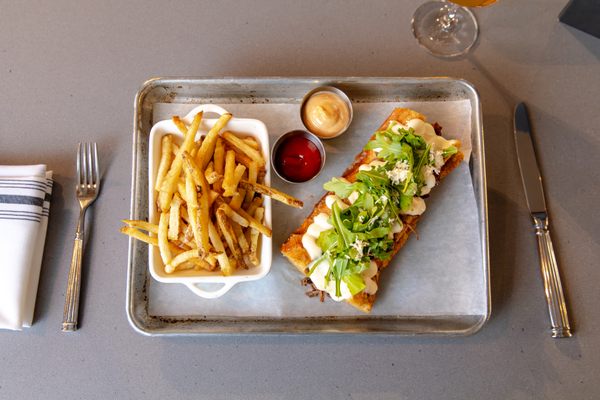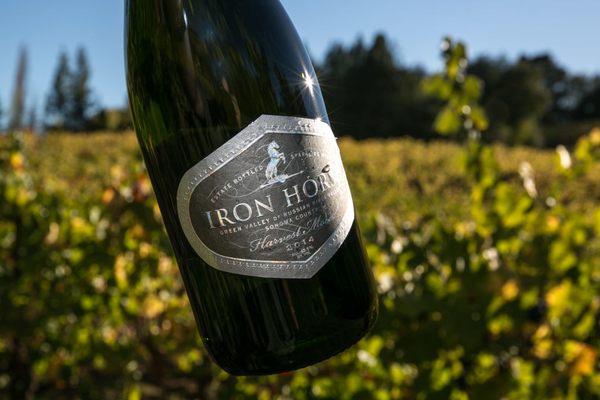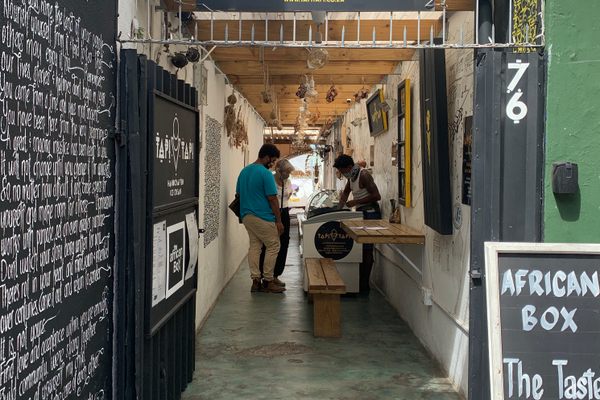A Parade of 2,000 Ducks Keeps a South African Vineyard Running
For pest control, this South African farm enlisted a fowl army.
On the Vergenoegd Löw Wine Estate, just outside Cape Town in South Africa, the daily commute of the workforce is slightly different than in New York or London. Here, the workers quack all along the way. And, you might have guessed, they are ducks. Ten-plus varieties of Indian Runner Ducks, to be precise. (And, incidentally, it is only the females that quack.)
But why do ducks work on a wine estate? Gavin Moyes, the estate’s tasting room manager and enthusiastic colleague to nearly 2,000 ducks, explains that they serve as “natural pest control.”
“Every morning,” he says, “they head off to the vineyard to consume insect pests.”
The estate is one of the oldest farms in the country, dating back to 1696. They produce ranges of white, rosé and red wines, but the winery is best known for premium red wines, such as their Shiraz, Merlot, Malbec, and Cabernet Sauvignons.
Since 1983, Vergenoegd has been refining their approach to ecological pest control, biodiversity, and sustainability. “We started off with chickens, but they proved not to be so efficient. The ducks, however, love eating snails and mosquito larvae, and when they defecate on the field, their dung helps our vines grow,” says Moyes. “It helps us on our way to being 100 percent pesticide and fertilizer-free.”
Using ducks in pest control is not such an unusual approach. In Bali, ducks are used in the rice paddies. Before planting, they are allowed onto the fields to eat all the pests and to poop as much as they like to fertilize the ground. In 2000, during a locust plague in China, ducks were brought in to control the swarms, with each one capable of eating up to 200 locusts each day.
At Vergenoegd, the estate holds a daily duck parade. When the gate between the estate and the duck residences is opened, the birds march along a fenced path, all the way to the fields. The spectacle is unbelievable. Hundreds of ducks, all slender and walking upright rather than waddling, just keep on coming. There is the odd goose among the ducks. While the ducks ignore me, the geese come closer, staring me down.

The geese, Moyes explains, are the duck’s bodyguards. “The ducks have absolutely no defense mechanism and are spooked easily. But the geese take on the role of their protectors, and go completely crazy when a mongoose or an owl approaches and scares them away. It’s a natural relationship that works very well.”
The ducks seem happy with their lives, but I needed to double-check that they don’t end up on the estate’s restaurant menu at some stage. “Oh, no. That would be like eating your colleagues,” says Moyes.
The ducks even adhere to a daily routine. After waking up around 7 a.m, they march to work at 10:30. After a day of gobbling up snails and pests, they’re home by 4 p.m. “The ducks live in smaller flocks all around the estate’s lake and have dedicated full-time carers,” explains Moyes. They even get annual leave, each year around harvest time, so they don’t eat the juicy grapes instead of the snails. But, as Runner ducks reportedly love routine, they still go on the duck parade each day. Quite often, their keepers allow them onto a large grassy patch, feed them treats, and put the sprinklers on for them if no rain is forecast.
When their parading days are over, their ends are just as peaceful. “Eventually, they retire onto the lake’s island,” Moyes says. “And every single one will die of old age.”
Gastro Obscura covers the world’s most wondrous food and drink.
Sign up for our regular newsletter.



























Follow us on Twitter to get the latest on the world's hidden wonders.
Like us on Facebook to get the latest on the world's hidden wonders.
Follow us on Twitter Like us on Facebook